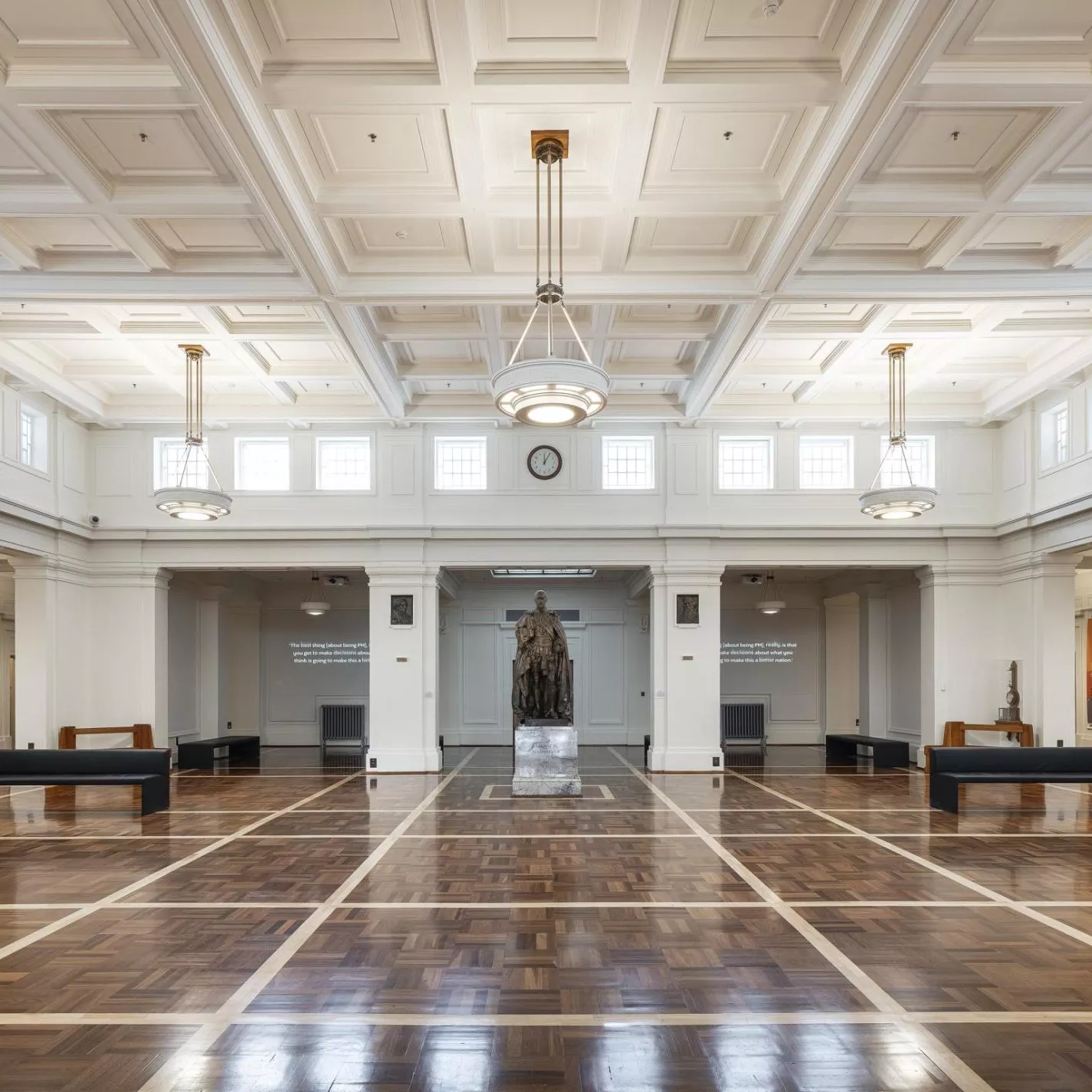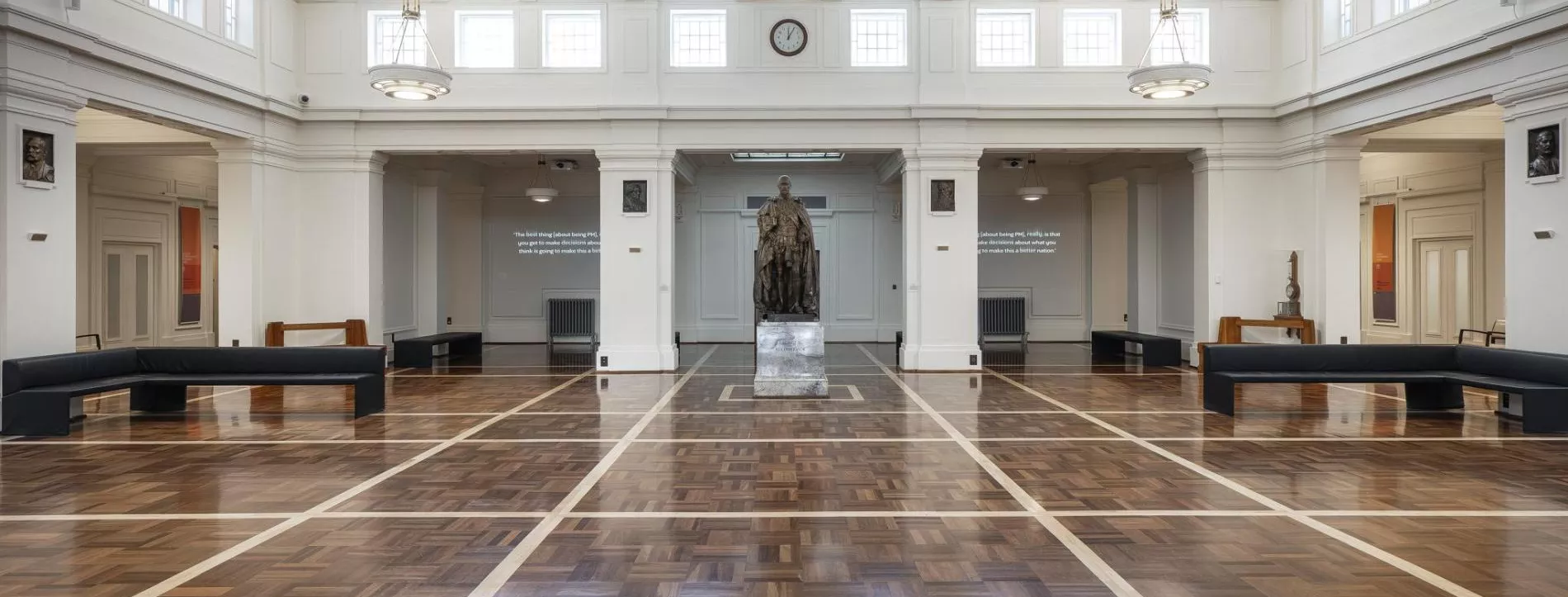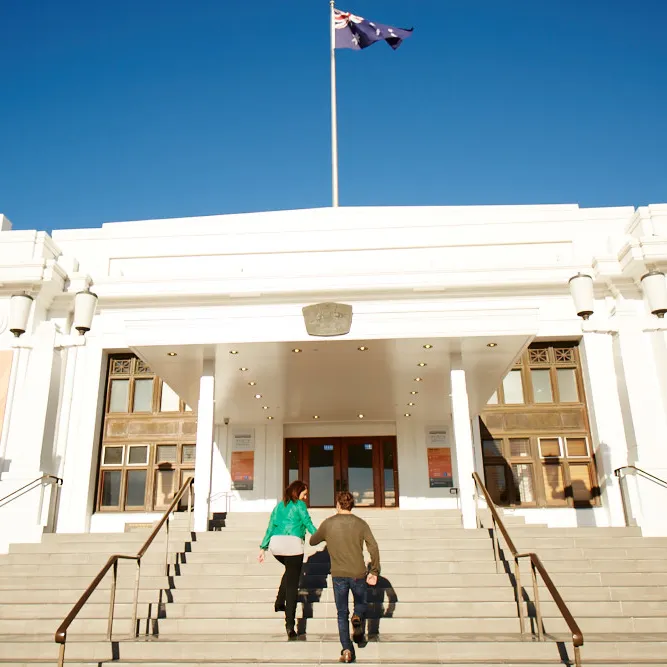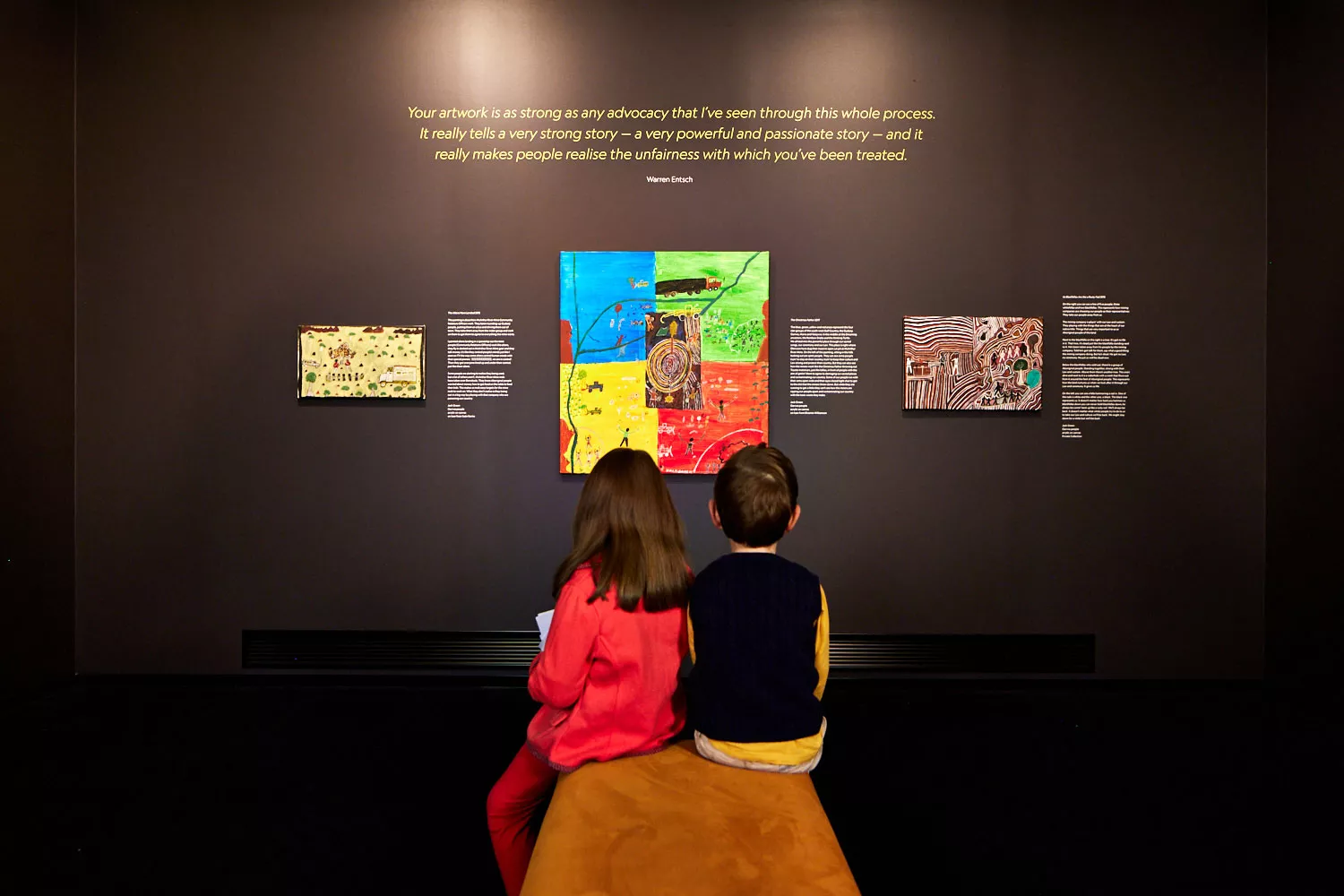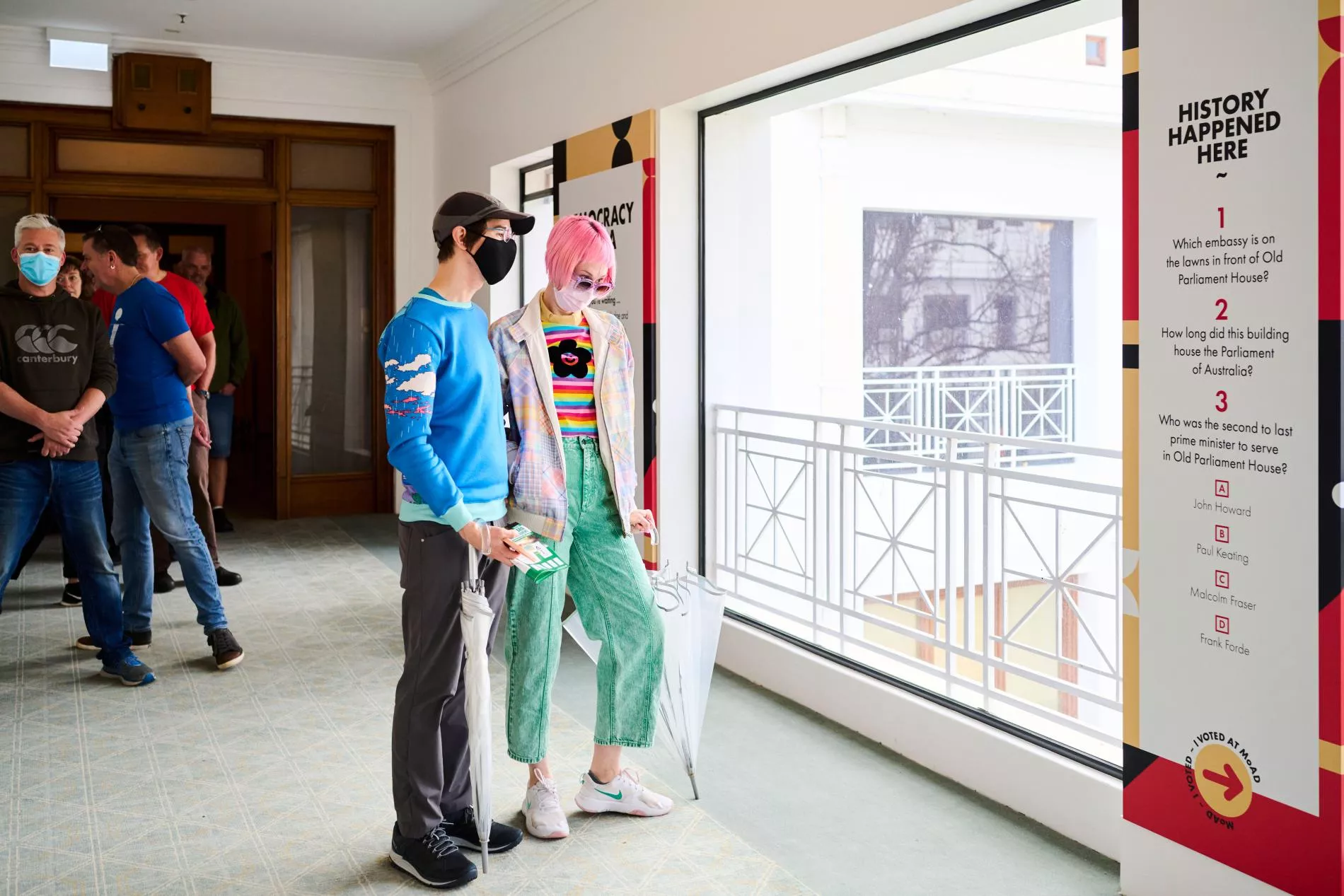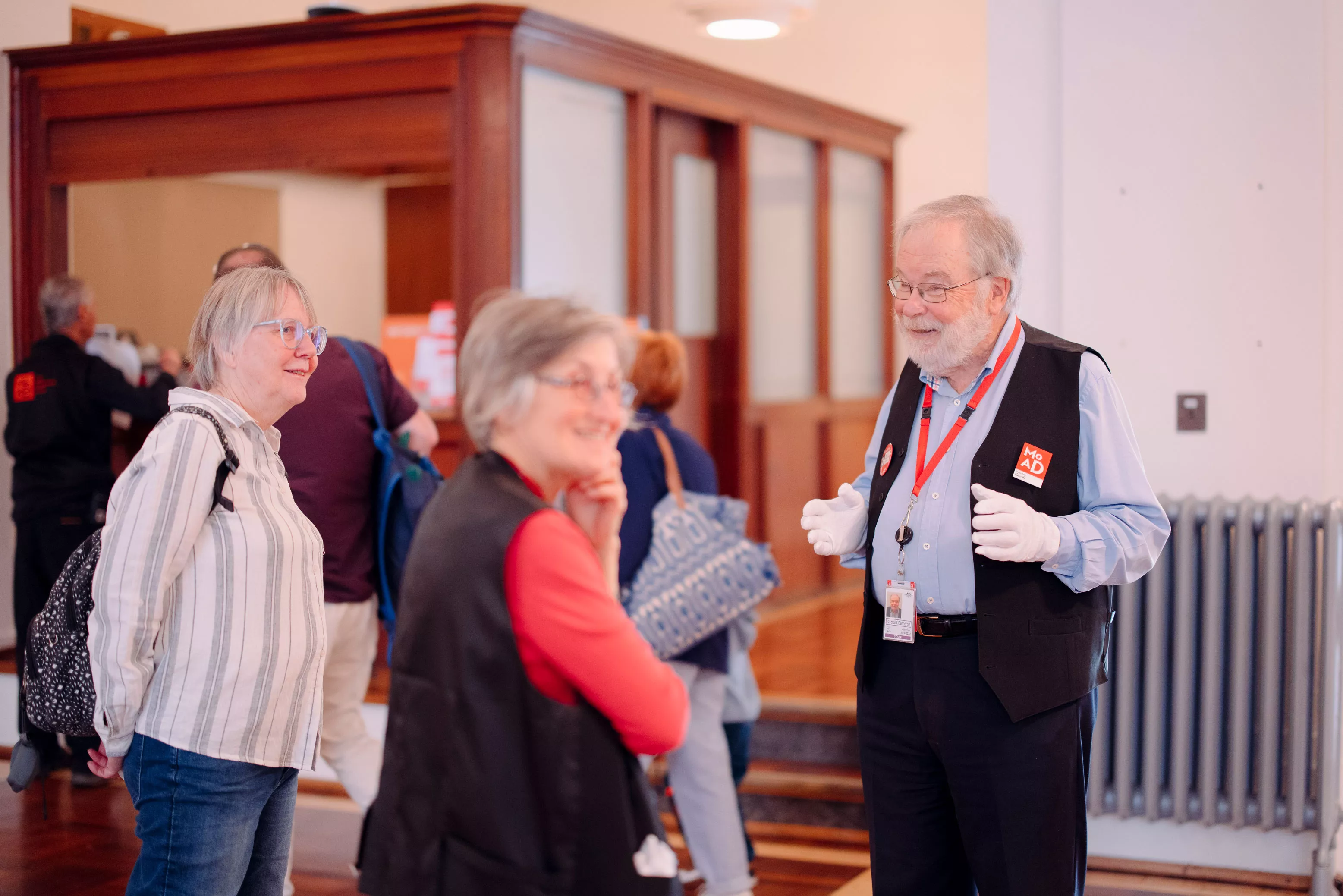Architecture of Old Parliament House
Classical simplicity
The architect of Old Parliament House would be surprised to find this building still standing today. Designed originally as a temporary home for the Australian parliament, it now houses the Museum of Australian Democracy and is on the National Heritage List.
John Smith Murdoch, Australia's first Commonwealth Government architect, designed his provisional parliament building in the 'stripped classical' style. It's a modest and functional building, with simple, strong lines. Look for the same square patterns inside the building and in the furniture – Murdoch and his team designed them to match.
Murdoch planned his three-storey building around the two law-making chambers: the House of Representatives and the Senate. The upper floor was for journalists, and the lower floor for offices, kitchens and storage. Inside, it was like a small town, including a library, a post office and a carpentry workshop.
Building started in 1923 and workers came from all around Australia. So did the materials - timbers were sourced from nearly every state, and the bricks came from the nearby Yarralumla Brickworks. Extensions were added over the years to house the nearly 1800 people who were working in a building original designed for only a few hundred.
Briefly destined for demolition, today Old Parliament House is valued not just for the events that took place in it, but for its architecture and design.

